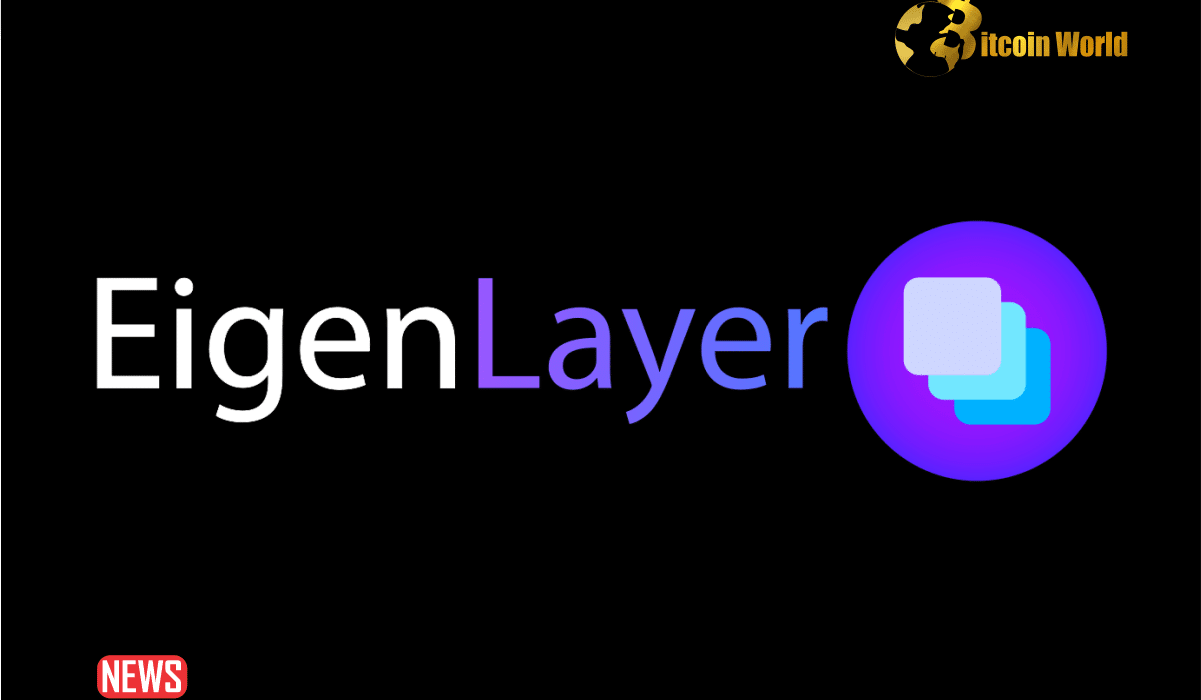Exciting news in the Ethereum restaking world! EigenLayer, a protocol making waves with its innovative approach, has just dropped a bombshell – they’re removing all limits on their Liquid Staking Token (LST) pools! If you’re into maximizing your ETH yield and keeping a close eye on DeFi developments, this is definitely something you need to understand.
What’s the Big Deal with EigenLayer Removing LST Limits?
For those just getting acquainted, EigenLayer is like the Swiss Army knife for Ethereum staking. It allows you to restake your ETH or LSTs to secure not just the Ethereum network, but also other cool projects called Actively Validated Services (AVSs). Think of it as earning extra rewards for your already staked assets. Previously, EigenLayer had caps on how much you could deposit into their LST pools. But that’s changed!
- Uncapped Access is Here (Temporarily): EigenLayer announced on February 5th that they’re temporarily lifting all deposit limits on their nine existing LST pools. This uncapped period is valid until 3 PM EST on February 9th.
- New LSTs Join the Party: To sweeten the deal, EigenLayer is also welcoming three new LSTs from Frax, Mantle, and Liquid Collective. More options mean more flexibility for users like you!
EigenLayer themselves put it quite dramatically, stating this move is a “temporary removal of TVL caps, paving the way for a future where pauses and caps are lifted permanently.” This signals a potentially huge shift in how the protocol operates and its long-term vision.
This unpause marks the temporary removal of TVL caps, paving the way for a future where pauses and caps are lifted permanently.
This puts the EigenLayer protocol at a critical juncture, seeking to balance neutrality with decentralization over the long-term. https://t.co/19Eiz0ZPAk
— EigenLayer 🔺 (@eigenlayer) February 5, 2024
Why is EigenLayer So Popular Anyway?
Good question! EigenLayer’s appeal boils down to unlocking more potential from your staked ETH. Let’s break it down:
- Double Duty for Your ETH: Normally, when you stake ETH, it secures the Ethereum network and earns you rewards. EigenLayer lets you use that same staked ETH (or LSTs representing staked ETH) to also secure other networks (AVSs). It’s like getting paid twice for the same work!
- Boosted Yield Potential: By restaking with EigenLayer, you can potentially earn additional yield on top of your regular Ethereum staking rewards. This extra yield comes from the AVSs you’re helping to secure.
- Flexibility in Participation: You can participate in EigenLayer restaking in two main ways:
- Native Restaking: Restaking ETH directly.
- LST Deposits: Depositing Liquid Staking Tokens (like stETH, rETH, etc.) into EigenLayer’s pools.
From Cautious Growth to Explosive Expansion
EigenLayer hasn’t always been about uncapped pools. They initially took a more cautious approach, gradually increasing deposit limits as they grew. However, recently, they significantly raised these caps, leading to a surge in popularity and Total Value Locked (TVL).
See Also: Ethereum Scaling Protocol AltLayer Airdrops $100M Worth of Tokens
The numbers speak for themselves. Currently, EigenLayer boasts a TVL of a whopping $2.17 Billion! This puts them in the big leagues, ranking as the 12th-largest DeFi protocol overall and the 5th-largest dApp on Ethereum, according to DeFi Llama. That’s serious growth!
The Decentralization vs. Neutrality Balancing Act
Now, let’s get to the heart of why EigenLayer is making this bold move and removing limits. It’s all about striking the right balance between decentralization and neutrality. These are crucial concepts for any blockchain protocol aiming for long-term success and trust.
EigenLayer accompanied their announcement with a detailed blog post, diving deep into this balancing act and proposing several measures. Here’s a simplified breakdown:
- Removing All Pool Limits: This is the headline – opening the floodgates for deposits (temporarily for now).
- Uncapping AVS Payments: Removing limits on how much AVSs can pay to restakers. This could incentivize even more participation.
- Limiting Protocol Influence: Restricting “protocol incentives and governance at 33% per entity.” This is aimed at preventing any single entity from gaining too much control and ensuring broader decentralization.
EigenLayer emphasizes that their goal is to “marry the principles of credible neutrality (minimal subjectivity) and decentralization.” They understand that this balance is essential for building trust and fostering a diverse and healthy ecosystem, drawing valuable lessons from Ethereum’s own journey.
Addressing Lido’s Dominance
Another interesting angle to this story is EigenLayer’s recent expansion of supported LSTs. This isn’t just about giving users more choices; it’s also a strategic move to address the dominance of Lido’s stETH in the staked ETH landscape. By supporting a wider range of LSTs, EigenLayer is contributing to a more diversified and potentially more resilient ecosystem, reducing the risks associated with over-reliance on a single entity.
What Does This Mean for You?
EigenLayer removing LST pool limits, even temporarily, is a significant development. It signals their commitment to growth and a potentially more open and decentralized future for restaking. If you’re holding ETH or LSTs and looking for ways to maximize your yield, EigenLayer is definitely worth keeping a close eye on. However, as always in the crypto world, remember to do your own research and understand the risks involved before diving in.
Disclaimer: The information provided is not trading nor financial advice. Bitcoinworld.co.in holds no liability for any trading or investments made based on the information provided on this page. We strongly recommend independent research and/or consultation with a qualified professional before making any trading or investment decisions.
#Binance #WRITE2EARN
Disclaimer: The information provided is not trading advice, Bitcoinworld.co.in holds no liability for any investments made based on the information provided on this page. We strongly recommend independent research and/or consultation with a qualified professional before making any investment decisions.


